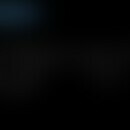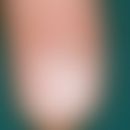Synonym(s)
DefinitionThis section has been translated automatically.
ClassificationThis section has been translated automatically.
Sunscreens can be classified according to their effective absorption spectrum (UVB/UVA), their sun protection factor (SPF) and/or the ingredients used.
A distinction is made between the ingredients:
- Physical filters (covering substances with small particle size, such as titanium dioxide, zinc oxide)
- Chemical UV filters (generally aromatic filter substances whose absorption maximum is usually in the UVB range between 280 and 320nm).
- Internal light filters (e.g. carotenoids mostly beta-carotene)
- DNA repair enzymes (photolyasis)
- External tanning substances (e.g. dihydroxyacetone in a concentration of 2.5-10%, usually 5%)
List of the most common chemical light stabilizers:
- 4-methylbenzylidene camphor
- benzophenone-5
- benzophenone-4
- benzophenone-3
- Bis Ethylhexyloxyphenol Methoxyphenyl Triazines
- Diethylhexyl butamido triazones
- Diethylamino Hydroxybenzoyl Hexyl Benzoates
- Butyl Methoxydibenzoylmethanes
- Drometrizoles Trisiloxanes
- Ectocrylenes (octyl methoxycinnamates or octocrylenes)
- Ethylhexyl methoxycinnamates (Octyl methoxycinnamates)
- Ethylhexyl triazones
- Ethylhexyl Salicylates
- Ethylhexyl Dimethyl PABA
- Homosalads
- Isoamyl Methoxycinnamates
- methylene bis-benzotriazolyl
- polysilicone-15
- Terephthalylidene dicamphor sulphonic acid
- Tetramethylbutylphenol (nano)
- Tris-Biphenyl Triazines (nano)
You might also be interested in
General informationThis section has been translated automatically.
Numerous new forms of application with different quality are constantly coming onto the market, whose manufacturers are trying to meet the increasing demands for water resistance, photostability, cosmetic acceptance, broad radiation protection. Creams, hydrodispersion gels, liposome preparations, lipoprotein milks, lipogels, sprays, sticks etc. are used. It is technologically possible to develop sun protection preparations with a SPF of 100.
The commercially available light protection products for endogenous application usually contain beta-carotene. Here, after 10-12 weeks of taking 15-30 mg p.o. low protective effects (max. LF of 4) can be achieved.
UVB: The sun protection factor (DIN) indicated on commercially available preparations refers to UVB rays. A sun protection factor of 6 means that the appearance of erythema can only be expected after 6 x longer exposure to the sun than on untreated skin of the same skin type (sun protection = erythema threshold time with sunscreen/erythema threshold time without sunscreen). In Europe, the efficacy of sun protection products is assessed in vivo in humans by determining the sun protection factor ( SPF) according to the COLIPA (International Sun Protection Factor Test Method). This method is based on the determination of the increase of the minimum erythema dose ( MED) after standardized application of sun protection products. The SPF indicates the protective effect of a preparation against UV-B radiation. To date, there is no globally recognized test method for determining the protective effect in the UV-A range.
The factor is not standardised internationally. For American products, the factor is indicated approx. 1/3 higher than for German products. The sun protection factor 12 for a German product would be marked 15 in the USA.
UVA: For well-tanned skin, UVA protection is generally not necessary. UVA protection is necessary for photoallergic and phototoxic reactions, for light dermatoses, to avoid hyperpigmentation, to prevent chronic light damage. A standardized method for measuring UVA protection does not exist as an erythema threshold can only be reached under extremely high UVA doses. Since February 2005, the new German industry standard 67502 has been in force in Germany, which serves to identify UVA protection. Herewith the UVA protection is indicated and put in relation to the UVB protection ("UVA/UVB protection balance"). The method is based on an in vitro transmission measurement through a defined layer of a light protection agent.
Infrared: Recently, information on infrared protection is also given. The infrared rays do not cause any direct skin damage. Their mode of action lies more in a loss of moisture and a dilatation of the blood vessels. They can support the formation of erythema (heat erythema), contribute to the development of sunstroke, heat cramps and circulatory stress during excessive sunbathing and lead to the inactivation of repair mechanisms of the skin. According to the present state of knowledge, infrared radiation protection is not considered to be recommendable and furthermore, current information is not standardized.
Ageing protection factor: The ageing protection factor for the skin should be set at approx. 60% of the erythema threshold.
Opaque materials/physical filters: Protective effects of powders like titanium oxide, zinc oxide, iron oxide, kaolin, talcum are based on the deflection of sun rays by reflection and scattering. Covering light protection pastes are highly effective, but are sometimes not very cosmetically accepted due to the whitening effect. The recent development of micro pigments with avoidance of the whitening effect at high efficacy (in the UV range) can be considered as a major progress. Micropigment-containing preparations are particularly suitable for the following indications:
- Presence of a high or pathological sensitivity to sunlight
- Protection of particularly UV-stressed skin areas such as lips
- Protection of pigment-free or low-pigment skin areas
- Protection of heavily pigmented or slightly darkened areas such as age spots, melasma (chloasma) or freckles(ephelids)
- Protection of the child's skin.
See also general rules of conduct for light protection of the skin.
Complication(s)This section has been translated automatically.
Known are irritations, allergic and photoallergic reactions, partly to the galenic base or to the sun protection preparation itself.
About 10% of the children with mainly photosensitization showed a photoallergic reaction and/or contact allergy to UV filters. The most frequent reactions to benzophenone-3 and cinnamates were to: ethylhexylmethoxycinnamate, 4-methylbenzylidene camphor, isoamyl-p-methoxycinnamate.
Some sun protection preparations are suspected of acting like hormones.
For the UV filters 4-methylbenzylidenecamphor (4-MBC also MBC), ethylhexylmethoxycinnamate (octylmethoxycinnamate, OMC), 3-benzylidenecamphor (3-BC), benzophenone-1 (BP1), benzophenone-2 (BP2), benzophenone-3 (oxybenzone), hormonal effects have been shown in animal experiments.
For the UV filters homosalate (homomenthyl salicylate or HMS) octyldimethyl-paraaminobenzoic acid (OD-PABA), and etocrylene, there is evidence of hormonal activity in cell experiments.
Some UV filters are absorbed through the skin and can be detected in breast milk.
The UV filter "3-benzylidene camphor (3-BC)" is now banned in the EU. From February 2016, no cosmetics containing this light protection agent may be marketed in the EU.
Oxybenzone and octinoxate: These UV filters are suspected to have harmful effects on coral reefs. They are believed to contribute to coral bleaching. From 2020, sun creams containing oxybenzone and octinoxate will be banned on Palau. Such bans are also being prepared in the US state of Hawaii and on the Caribbean island of Bonaire, which belongs to the Netherlands.
Benzophenone may be present as an additive in perfumes.
Note(s)This section has been translated automatically.
The compliance in the application of sun protection products is essentially dependent on their cosmetic properties. The higher the desired sun protection factor, the higher the concentrations of the sun protection substances in a formulation have to be. This leads to an increasing "pastying" of the preparations. Increasing amounts of particles remain on the skin during application. This affects the cosmetic acceptance. Sun protection products up to a sun protection factor of 15 can currently be produced with a share of sun protection substances of about 10%. In order to achieve higher sun protection factors, considerably higher concentrations (usually 25% or more; lower cosmetic acceptance) of sun protection substances are used.
There is a tendency of some professional associations not to show SPFs higher than 50 on sun protection products.
Sunscreensand vitamin D: in general, an efficient UVB filter reduces the vitamin D level. To what extent this has a clinical relevance in the summer months is completely unclear.
LiteratureThis section has been translated automatically.
- Chiu A et al (2003) Topical vitamins, minerals and botanical ingredients as modulators of environmental and chronological skin damage. Br J Dermatol 149: 681-691
- Diffey BL (2001) When should sunscreen be reapplied? J Am Acad Dermatol 45: 882-885
- Hawk JL (2003) Cutaneous photoprotection. Arch Dermatol 139: 527-530
- Herzinger T (2017) Sun protection factor 50+. dermatologist 68: 368-370
- Haylett AK et al(2014) Sunscreen photopatch testing: a series of 157 children.
Br J Dermatol 171:370-375 - Krutmann J (2001) New developments in photoprotection of human skin. Skin Pharmacol Appl Skin Physiol 14: 401-407
- Livingston PM et al (2003) Sun exposure and sun protection behaviours among Australian adolescents: trends over time. Prev Med 37: 577-584
- Mang R, Krutmann J (2003) Sun protection on holiday. dermatologist 54: 498-505
- Stahl W et al.(2006) Systemic photoprotection by carotenoids. Dermatologist 57: 281-285




